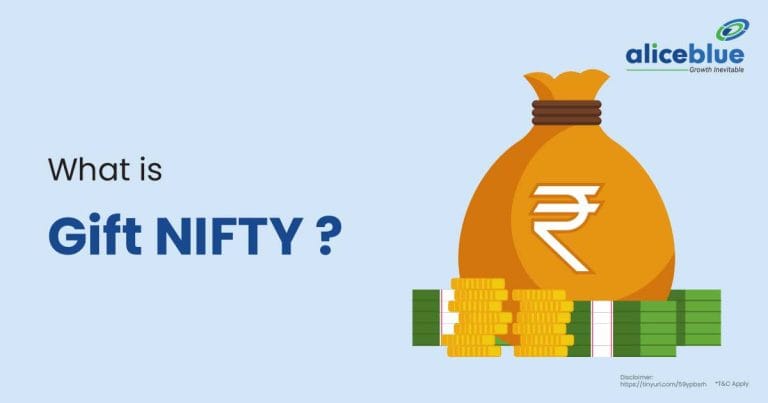Indian Oil Corporation Ltd’s fundamental analysis shows a market capitalization of ₹2,38,663.05 crore, a PE ratio of 7.86, a debt-to-equity ratio of 0.72, and a return on equity (ROE) of 25.7%. The company demonstrates strong financial performance and effective leverage management, reflecting its solid market position.
Content:
- Indian Oil Corporation Ltd Overview
- Indian Oil Corporation Financial Results
- Indian Oil Corporation Financial Analysis
- Indian Oil Corporation Company Metrics
- Indian Oil Corporation Stock Performance
- Indian Oil Corporation Peer Comparison
- Indian Oil Corporation Shareholding Pattern
- Indian Oil Corporation History
- How To Invest In Indian Oil Corporation Ltd Share?
- Indian Oil Corporation Limited Fundamental Analysis – FAQs
Indian Oil Corporation Ltd Overview
Indian Oil Corporation Ltd is a leading Indian energy company specializing in refining, pipeline transportation, and marketing of petroleum products. It is renowned for its extensive network and significant contributions to India’s energy security and economic growth.
The company has a market capitalization of ₹2,38,663.05 crore and is listed on both the Bombay Stock Exchange (BSE) and National Stock Exchange (NSE). Currently, the stock is trading 56.6% below its 52-week high of ₹197 and 27.6% above its 52-week low of ₹85.5. The all-time high of the stock is ₹197, while the all-time low is ₹24.9.

Indian Oil Corporation Financial Results
Indian Oil Corporation’s sales grew from ₹5,89,336 crore in FY 22 to ₹8,41,756 crore in FY 23, then decreased to ₹7,76,352 crore in FY 24. EBITDA rose from ₹50,824 crore to ₹79,434 crore. OPM, EPS, and RoNW showed overall improvement despite fluctuations.
- Revenue Trend: Sales decreased from ₹8,41,756 crore in FY 23 to ₹7,76,352 crore in FY 24, following an increase from ₹5,89,336 crore in FY 22, indicating a need for revenue stabilization.
- Equity and Liabilities: Indian Oil Corporation’s equity and liabilities structure reflects financial stability and strategic management. The company maintains a balance between equity financing and manageable debt levels, ensuring sustainability and flexibility in capital allocation for growth initiatives.
- Profitability: Operating Profit Margin (OPM) increased from 8% in FY 22 to 10% in FY 24, despite a dip to 4% in FY 23, indicating fluctuating operational efficiency.
- Earnings per Share (EPS): EPS increased from ₹27.34 in FY 22 to ₹30.3 in FY 24, despite a significant drop to ₹7.11 in FY 23, indicating varied profit growth per share.
- Return on Net Worth (RoNW): RoNW showed a fluctuating trend, increasing from 18.42% in FY 22 to 22.41% in FY 24, despite a drop to 6.11% in FY 23, indicating varied equity utilization efficiency and profitability.
- Financial Position: The company’s financial position improved with EBITDA increasing from ₹50,824 crore in FY 22 to ₹79,434 crore in FY 24, despite a dip to ₹34,898 crore in FY 23, showcasing varied financial health and management.
Indian Oil Corporation Financial Analysis
| FY 24 | FY 23 | FY 22 | |
| Sales | 7,76,352 | 8,41,756 | 5,89,336 |
| Expenses | 7,00,761 | 8,11,057 | 5,41,594 |
| Operating Profit | 75,591 | 30,699 | 47,742 |
| OPM % | 10 | 4 | 8 |
| Other Income | 3,843 | 4,199 | 3,082 |
| EBITDA | 79,434 | 34,898 | 50,824 |
| Interest | 7,826 | 7,541 | 5,423 |
| Depreciation | 15,866 | 13,181 | 12,348 |
| Profit Before Tax | 55,742 | 14,176 | 33,053 |
| Tax % | 25.34 | 23.52 | 25.9 |
| Net Profit | 43,161 | 11,704 | 25,727 |
All values in ₹ Crores.
Indian Oil Corporation Company Metrics
Indian Oil Corporation Ltd’s market capitalization is ₹2,38,663.05 crore with a book value of ₹130 per share. It has an asset turnover ratio of 1.68 and a total debt of ₹1,32,628 crore. The EBITDA is ₹79,434 crore, with a dividend yield of 7.09% and EPS of ₹21.8.
Market Capitalization: Indian Oil Corporation Ltd’s market capitalization represents the total market value of its outstanding shares, amounting to ₹2,38,663.05 crore.
Book Value: Indian Oil Corporation Ltd has a book value of ₹130 per share, representing the net asset value of the company divided by the number of outstanding shares.
Face Value: The face value of Indian Oil Corporation Ltd’s shares is ₹10.00, which is the nominal value of each share as stated on the share certificate.
Asset Turnover: Indian Oil Corporation Ltd has an asset turnover ratio of 1.68, indicating the company’s efficiency in using its assets to generate revenue.
Total Debt: Indian Oil Corporation Ltd has a significant debt of ₹1,32,628 crore, reflecting its financial leverage and obligations. Managing this debt effectively is crucial for the company’s long-term financial stability and growth.
EBITDA: Indian Oil Corporation Ltd’s EBITDA was ₹79,434 crore, reflecting its operational performance and profitability over the financial year.
Dividend Yield: Indian Oil Corporation Ltd has a dividend yield of 7.09%, reflecting the annual dividend income relative to its current share price.
Earnings per Share (EPS): Indian Oil Corporation Ltd has an EPS of ₹21.8, indicating the amount of profit attributed to each outstanding share of common stock, reflecting the company’s profitability for its shareholders.
Indian Oil Corporation Stock Performance
Indian Oil Corporation Ltd delivered remarkable returns on investment with 80.9% over 1 year, 34.3% over 3 years, and 15.0% over 5 years, highlighting strong long-term performance and overall profitability for investors.
| Period | Return on Investment (%) |
| 1 Year | 80.9 |
| 3 Years | 34.3 |
| 5 Years | 15.0 |
Example: If an investor had invested ₹1,000 in Indian Oil Corporation Ltd stock:
1 year ago, their investment would be worth ₹1,809.
3 years ago, their investment would have grown to ₹1,343.
5 years ago, their investment would have increased to approximately ₹1,150.
This highlights strong long-term performance and overall profitability for investors.
Indian Oil Corporation Peer Comparison
Indian Oil Corporation peers display diverse metrics. Reliance Industries leads with a CMP of ₹2921.5 and a market cap of ₹19,76,833.62 crore. IOCL follows with a CMP of ₹169.15, a market cap of ₹2,38,846.62 crore, and a 1-year return of 80.92%. BPCL, HPCL, MRPL, CPCL, and Gandhar Oil also show varied performance.
| Name | CMP Rs. | Mar Cap Rs.Cr. | P/E | ROE % | EPS 12M Rs. | 1Yr return % | ROCE % | Div Yld % |
| Reliance Industries | 2921.5 | 1976833.62 | 28.75 | 9.25 | 101.61 | 14.69 | 9.61 | 0.34 |
| I O C L | 169.15 | 238846.62 | 7.75 | 25.66 | 21.83 | 80.92 | 21.14 | 7.09 |
| B P C L | 333.45 | 144710.87 | 7.42 | 41.9 | 43.92 | 86.49 | 32.09 | 6.3 |
| H P C L | 379.6 | 80793.6 | 8.18 | 40.38 | 46.45 | 113.59 | 21.26 | 5.53 |
| M R P L | 207.05 | 36298.21 | 13.64 | 31.93 | 15.15 | 138.92 | 25.75 | 1.45 |
| C P C L | 924.75 | 13766.06 | 5.49 | 36.46 | 168.26 | 145.44 | 35.44 | 5.95 |
| Gandhar Oil Ref. | 206.66 | 2022.09 | 15.97 | 14.81 | 13.83 | 21.7 | 0.24 |
Indian Oil Corporation Shareholding Pattern
For Indian Oil Corporation, promoter holding stayed at 51.5% in FY 2024. FII rose to 8.49% from 6.91%, DII fell to 10.33% from 12.05%, and retail & others increased slightly to 29.65% from 29.53% in FY 2023.
| FY 2024 | FY 2023 | FY 2022 | |
| Promoters | 51.5 | 51.5 | 51.5 |
| FII | 8.49 | 6.91 | 8.36 |
| DII | 10.33 | 12.05 | 11.32 |
| Retail & others | 29.65 | 29.53 | 28.82 |
All values in %
Indian Oil Corporation History
Indian Oil Corporation (IOC) was established in 1959, combining Indian Refineries Ltd. and Indian Oil Company Ltd. The merger aimed to create a national oil company to support India’s growing energy needs. IOC quickly expanded its refining and marketing operations to become a leading player in the industry.
In the 1970s, IOC diversified its operations by entering the petrochemicals sector. This move was strategic, allowing the company to utilize by-products from its refineries and cater to the growing demand for petrochemical products in India. IOC’s petrochemicals division soon became a significant contributor to its revenue.
During the 1980s and 1990s, IOC focused on expanding its refining capacity and enhancing its distribution network. The company established several new refineries and pipelines, ensuring a steady supply of petroleum products across the country. This period marked IOC’s transformation into an integrated energy major.
The 2000s saw IOC venturing into international markets. The company acquired stakes in overseas oil and gas assets, ensuring energy security for India. IOC also modernized its refineries and adopted advanced technologies to improve efficiency and environmental sustainability, reinforcing its commitment to innovation.
Today, Indian Oil Corporation is India’s largest commercial enterprise and a Fortune Global 500 company. It operates a vast network of refineries, pipelines, and retail outlets, serving millions of customers. IOC’s diversified portfolio and strategic initiatives continue to drive its growth and leadership in the energy sector.
How To Invest In Indian Oil Corporation Ltd Share?
Investing in Indian Oil Corporation shares is a straightforward process:
- Open a Demat Account: Start by opening a Demat and trading account with a reliable brokerage firm like Alice Blue.
- Complete KYC: Submit necessary documents for KYC verification.
- Fund Your Account: Deposit funds into your trading account.
- Buy Shares: Search for Indian Oil Corporation shares and place your buy order.

Indian Oil Corporation Limited Fundamental Analysis – FAQs
Indian Oil Corporation Ltd’s fundamental analysis shows a market capitalization of ₹2,38,663.05 crore, a PE ratio of 7.86, a debt-to-equity ratio of 0.72, and an ROE of 25.7%, reflecting strong financial performance and effective leverage management.
Indian Oil Corporation Ltd has a market capitalization of ₹2,38,663.05 crore, reflecting its substantial market value and leading position in the energy sector.
Indian Oil Corporation Limited is India’s largest commercial enterprise, specializing in refining, pipeline transportation, and marketing of petroleum products, along with a significant presence in petrochemicals and natural gas.
Indian Oil Corporation is a government-owned entity, with the Government of India being the largest shareholder and holding a significant stake in the company.
The main shareholders of Indian Oil Corporation include promoters with 51.5%, FIIs holding 8.49%, DIIs with 10.33%, and retail and other investors holding 29.65%.
Indian Oil Corporation operates in the energy sector, primarily focusing on refining, pipeline transportation, and marketing of petroleum products, as well as petrochemicals and natural gas.
Whether IOC is a good stock to buy depends on individual investment goals and market conditions. The company’s strong financials and market position suggest potential for long-term gains.
To invest in Indian Oil Corporation Ltd shares, open a brokerage account, complete KYC, deposit funds, and purchase shares through the stock exchange using your broker’s platform or app.
We hope you’re clear on the topic, but there’s more to explore in stocks, commodities, mutual funds, and related areas. Here are important topics to learn about.








